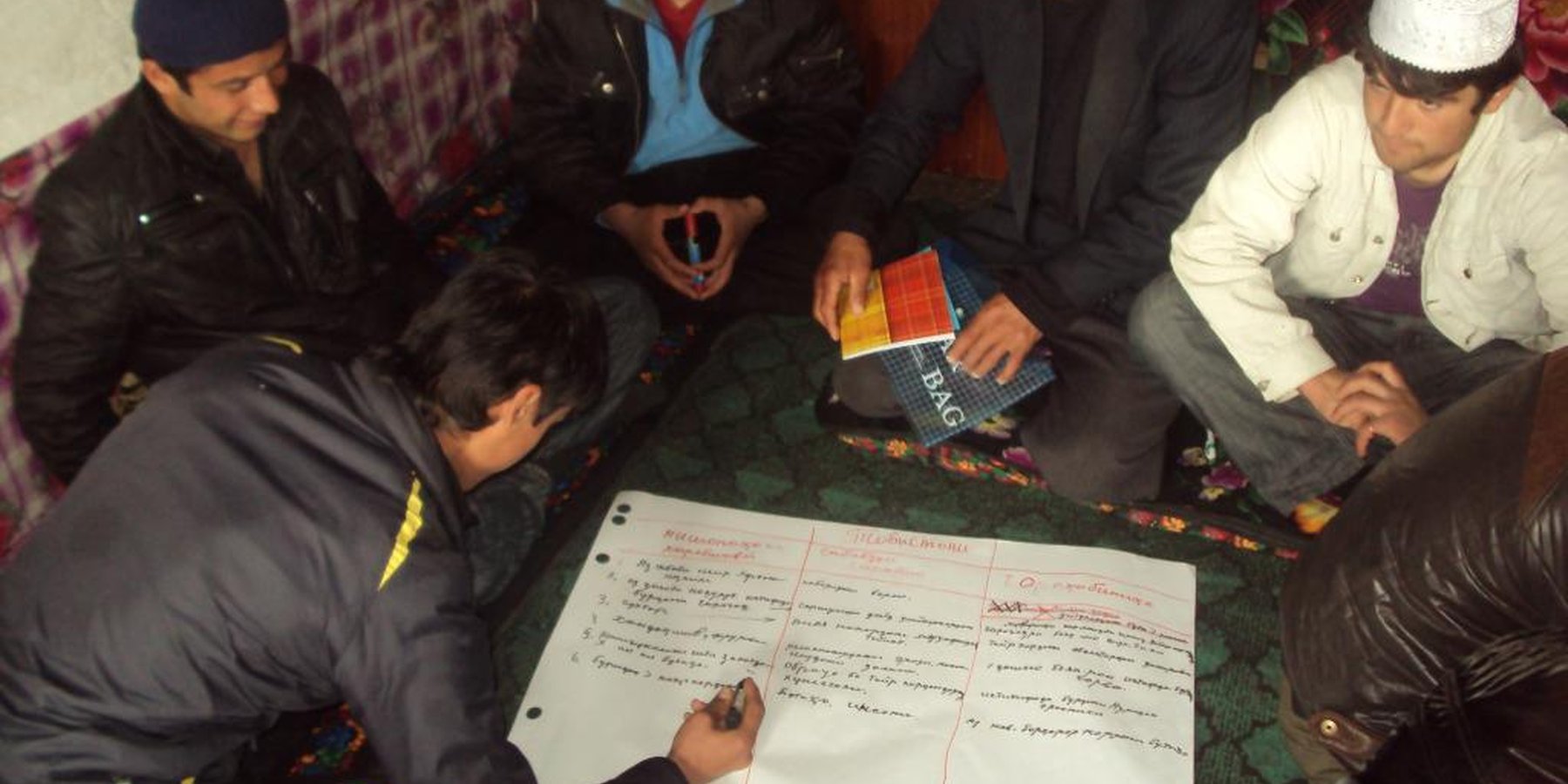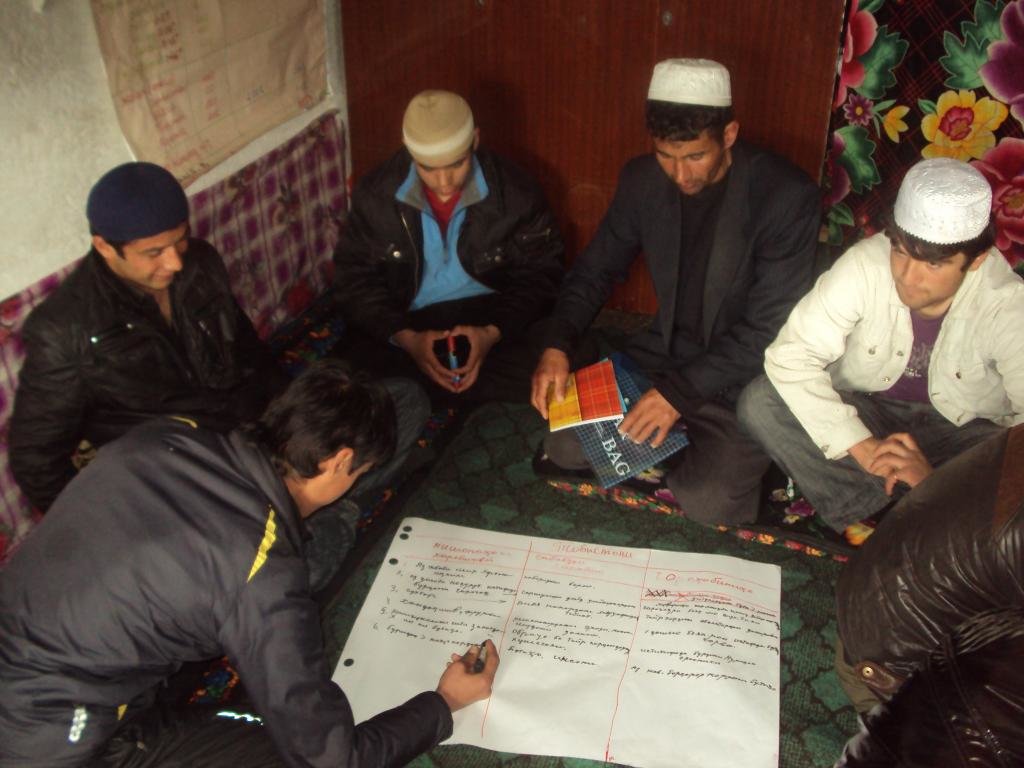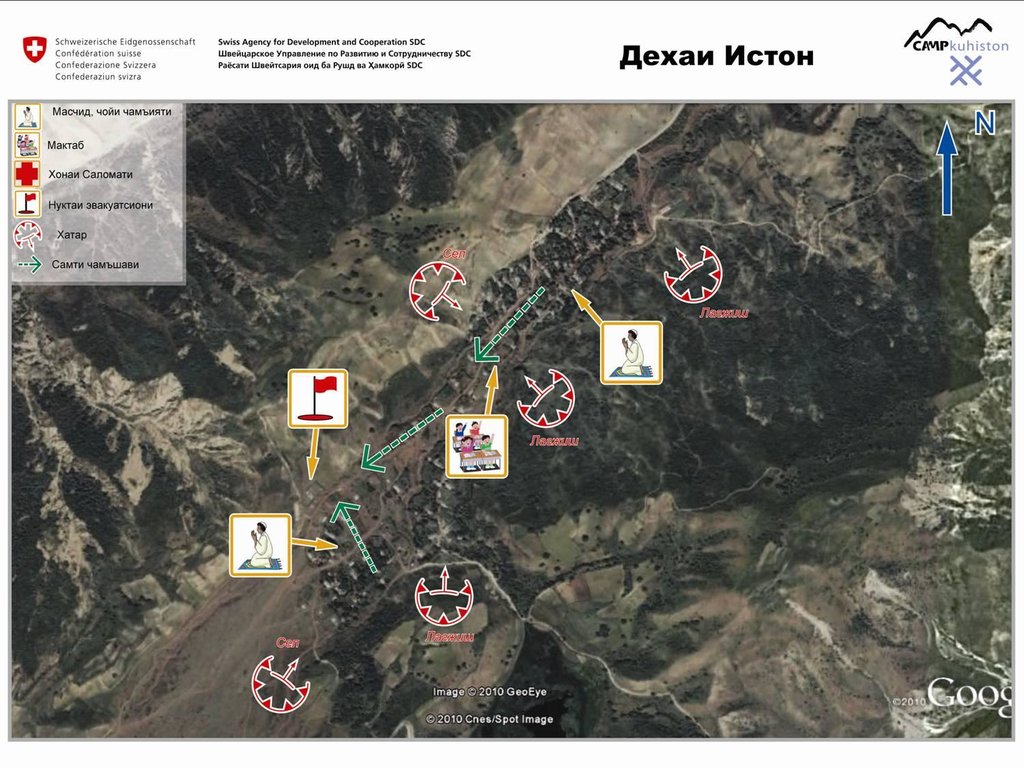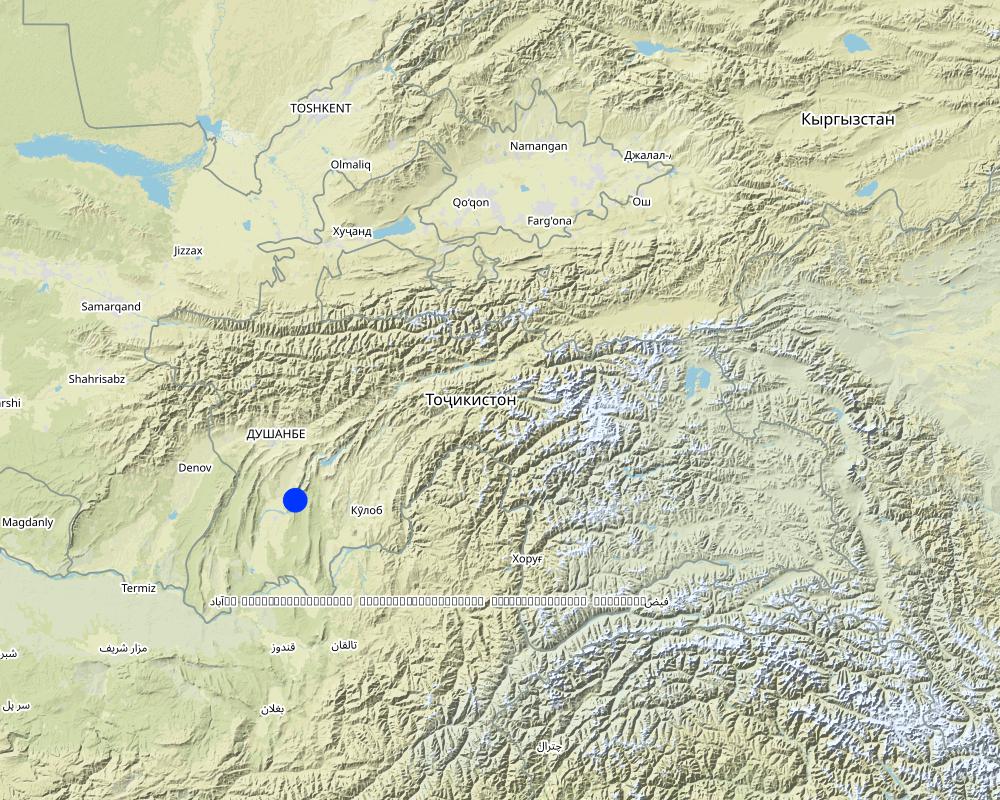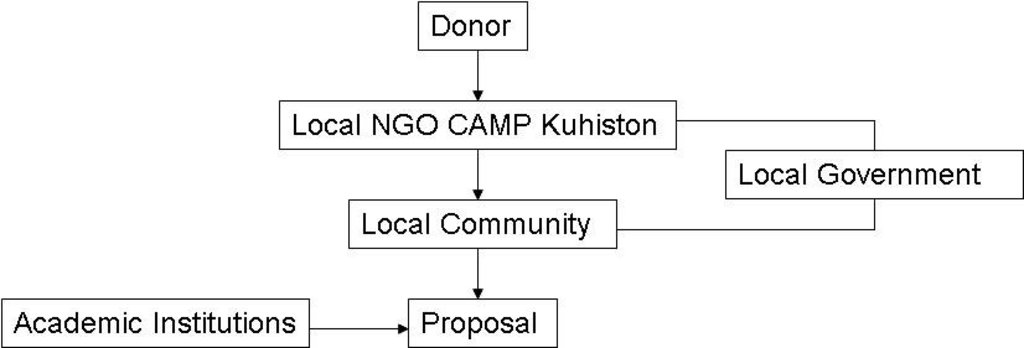Selection of SLM Technologies for Natural Disaster Risk Mitigation [塔吉克斯坦]
- 创建:
- 更新:
- 编制者: shane stevenson
- 编辑者: –
- 审查者: David Streiff, Alexandra Gavilano, Joana Eichenberger
CAMP Kuhiston
approaches_2437 - 塔吉克斯坦
查看章节
全部展开 全部收起1. 一般信息
1.2 参与方法评估和文件编制的资源人员和机构的联系方式
SLM专业人员:
SLM专业人员:
Pocheov Mirzokubon
+992 44 601 55 05
CAMP Kuhiston
Rudaki avenue, Dushanbe
塔吉克斯坦
有助于对方法进行记录/评估的项目名称(如相关)
Pilot Program for Climate Resilience, Tajikistan (WB / PPCR)有助于对方法进行记录/评估的机构名称(如相关)
CAMP - Central Asian Mountain Partnership (CAMP - Central Asian Mountain Partnership) - 吉尔吉斯斯坦有助于对方法进行记录/评估的机构名称(如相关)
CDE Centre for Development and Environment (CDE Centre for Development and Environment) - 瑞士1.3 关于使用通过WOCAT记录的数据的条件
(现场)数据是什么时候汇编的?:
10/06/2011
编制者和关键资源人员接受有关使用通过WOCAT记录数据的条件。:
是
1.4 SLM技术问卷的参考
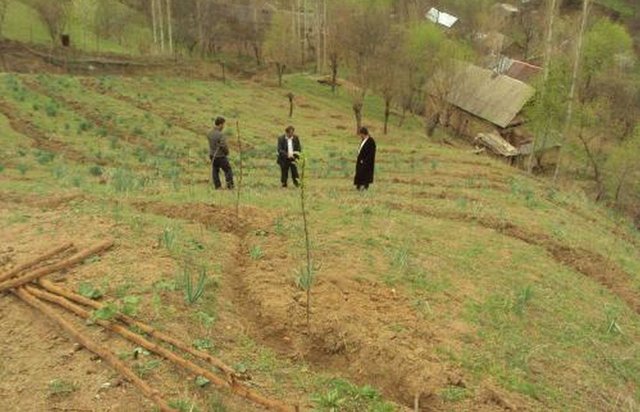
Planting of fruit trees to increase slope stabilisation [塔吉克斯坦]
Planting fruit tree orchards to increase the stability of the steep loess soil slopes.
- 编制者: Gulniso Nekushoeva
2. SLM方法的描述
2.1 该方法的简要说明
Community Based Natural Disaster Risk Management Workshops for identification of locations for the implementation of SLM technology to reduce the risk to the village from natural disasters.
2.2 该方法的详细说明
该方法的详细说明:
Aims / objectives: The main objective was to use a community based participatory approach to evaluate the risk from natural hazards and aid in the effective selection of location and types of SLM Technologies that could be implemented. The workshop systematically works through the natural disaster risk assessment process which includes evaluation of the natural and human triggers that can causes and contribute to specific natural disasters and subsequently rank the risk as either high/medium/low based upon a predetermined criteria. The assessment is repeated with the assumption the SLM mitigation has been implemented to evaluate whether the natural disaster risk would be reduced.
Methods: Several methodologies are used in this approach, these include the, display of posters and photos, watching documentary style DVD’s, playing awareness raising training games, and distribution of brochures to educate the communities on the causes and impacts of natural disasters so that they can then complete a systematic risk assessment process. This is undertaken within the community using interactive participatory training modules and experienced teachers. Once the technologies are decided upon a proposal form is completed and copies submitted to funding agencies and the local government. A Memorandum of Understanding is signed with the local government to endorse the approach and any subsequent implementation activities. The proposal is vetted by experts for modification and approval to ensure best practice and sustainable results.
Stages of implementation: The communities are selected based upon natural disaster statistics and a natural disaster workshop conducted for up to twenty members of the community. At the completion of the workshop the community produce several proposals for the implementation of SLM technologies that will reduce the risk from specific natural disasters. The proposals are reviewed by experts from the soil institute and horticulture institute to ensure they are practical, viable and effective before final submission to the donor for funding. The local government remains informed of the activities throughout the process and is provided with copies of the proposals.
Role of stakeholders: NGO CAMP Kuhiston were the overall project managers. CAMP designed and conducted training on Disaster Risk Reduction and developed the natural hazard risk assessment process that leads to the formulation of the SLM mitigation proposals. CAMP are also responsible for engaging the experts and providing information to the local government who are asked to support the process. The community has to actively be involved and design their own proposal and decide how they will contribute to the implementation process.
Other important information: Although this could potentially be a lengthy process it is important that the communities understand why they have chosen a specific SLM technology and the desired impact that will help secure their livelihoods.
2.3 该方法的照片
2.5 采用该方法的国家/地区/地点
国家:
塔吉克斯坦
区域/州/省:
RRS
有关地点的进一步说明:
Nurabad
注释:
SLM was implemented in 7 different locations covering 5 villages within Mujiharf and Hakimi jamoats of Nurabad District. The two main watersheds are shown in the googleEarth file.
Map
×2.6 该方法的开始和终止日期
注明开始年份:
2009
终止年份(若不再采用该方法):
2011
2.7 方法的类型
- 基于项目/方案
2.8 该方法的主要目的/目标
The Approach focused mainly on SLM with other activities (Natural Disaster Risk Mitigation)
The main objective was to educate the communities on the causes and triggers of natural disasters and how these triggers can be combated by SLM technologies. The approach concentrated on making the link between SLM technologies and causes of natural disasters. The risk assessment process helped communities understand how to evaluate the risk to their community from different types natural disasters and how these proposals would help reduce the risk presented by these types of natural disasters and also where is was the most effective and efficient use of time, finance and resources to reduce this risk.
The SLM Approach addressed the following problems: The stabilisation of degraded slopes that increased the risk to communities from natural disaster such as mud flows, landslides, and avalanches.
2.9 推动或妨碍实施本办法所适用的技术的条件
社会/文化/宗教规范和价值观
- 阻碍
There were major problems incorporating women into the initial disaster risk management workshops and trainings. Therefore, there was limited input into the mitigation proposal development process.
Treatment through the SLM Approach: In some villages workshops were held separately from the men using female trainers. However, due to low educational backgrounds there was a limited the level of participation. The field training during the implementation stage managed to capture the women
财务资源和服务的可用性/可得性
- 阻碍
There was initial concern that the farmers would not have finance to maintain the technology in the first year. The project was also conscious that fruit trees are subject to tax after three years.
Treatment through the SLM Approach: Farmers were provided with a minimal payment at different stages as the SLM technology developed.
机构设置
- 阻碍
The Jamoat wanted to have more say in the land owners who received the trees.
Treatment through the SLM Approach: The Jamoat were taken on site visits and were explained that the land was selected because of the hazard risk, not the land owner.
法律框架(土地使用权、土地和水使用权)
- 阻碍
There was no formal documentation to show who was the owner of the land.
Treatment through the SLM Approach: There was an informal agreement between the land user, village members and jamoat.
The existing land ownership, land use rights / water rights moderately hindered the approach implementation Although there are land use certificates available for farms, there are problems with allocating specific parcels of land to one particular land user. Therefore this issue needs to resolved before a technology can be implemented.
3. 相关利益相关者的参与和角色
3.1 该方法涉及的利益相关者及其职责
- 当地土地使用者/当地社区
Five local communities (20 people per community)
Individual land users were involved in workshops and planning of SLM Technology
Community were involved in workshops
Women particpitaed less, since there are noticeable gaps in the education levels of the genders and women fulfill a more traditional role centered around the household.
This area suffers from high levels of labour migration with many of the men working abroad in countries such as Russia. In particular separate workshops were held for women to ensure that they participated in the approach.
- SLM专家/农业顾问
Specialists were involved in selection of location of implementation
- NGO
CAMP Kuhiston
CAMP Kuhiston developed the approach in collaboration with international support, land users, academic institutions, the local community and local government.
- 地方政府
Jamoats, Khukhmats
- 国家政府(规划者、决策者)
Tajik Soil Institute, Horticulture Institute,
- 国际组织
Voluntary Services Overseas, University of Bern
如果涉及多个利益相关者,请注明领导机构:
CAMP Kuhiston
3.2 当地土地使用者/当地社区参与该方法的不同阶段
| 当地土地使用者/当地社区的参与 | 指定参与人员并描述活动 | |
|---|---|---|
| 启动/动机 | 无 | |
| 计划 | 无 | |
| 实施 | 互动 | Involved in the workshops and the development of the proposals |
| 监测/评估 | 无 | |
| Research | 无 |
3.3 流程图(如可用)
具体说明:
Organisation chart showing how the proposal for the SLM technology developed.
作者:
S. Stevenson (CAMP Kuhiston)
3.4 有关SLM技术选择的决策
具体说明谁有权决定选择要实施的技术:
- 主要是SLM专家,咨询土地使用者之后
解释:
SLM specialists made the decision on the SLM technology, but consulted with the land users before implementation.
Decisions on the method of implementing the SLM Technology were made by NGO CAMP Kuhiston. NGO CAMP combined two funded projects to develop the approach for the implementation to the SLM technology with consultation from the Tajik Soil Institute and the Horticultural Institute.
4. 技术支持、能力建设和知识管理
4.1 能力建设/培训
是否为土地使用者/其他利益相关者提供培训?:
是
明确受训人员:
- 土地使用者
- 20 members of five communities received training.
如果相关,请说明性别、年龄、地位、种族等。:
The training on the risk assessment process included all members of the community, although due to the conservative nature of the community some trainings were divided between women and men.
培训形式:
- 在职
- 课程
涵盖的主题:
The initial training were on natural disasters, their casues and impacts. Subsequent training is the communites covered soil and water conservation and fruit cultivation.
4.2 咨询服务
土地使用者有权使用咨询服务吗?:
否
4.3 机构强化(组织发展)
是否通过这种方法建立或加强了机构?:
- 是,少许
具体说明机构的强化或建立程度:
- 本地
具体说明支持类型:
- 能力建设/培训
提供进一步细节:
Two academic institutions were financially supported to undertake the review and evaluation process. Local NGO camp was supported by international finance to implement the approach and subsequent activities.
4.4 监测和评估
监测和评估是该方法的一部分吗?:
是
注释:
no. of land users involved aspects were ad hoc monitored by project staff through observations; indicators: The level of involvement in the workshops by the land users.
socio-cultural aspects were ad hoc monitored by project staff through observations; indicators: The level of engagement of the government and of the women in the process.
management of Approach aspects were ad hoc monitored by project staff through observations; indicators: International staff provided informal monitoring of the approach.
technical aspects were ad hoc monitored by other through observations; indicators: The academic institutions reviewed the proposals.
There were few changes in the Approach as a result of monitoring and evaluation: The risk assessment process was simplified and the format of the proposals was made more understandable to the participants.
There were few changes in the Technology as a result of monitoring and evaluation: The monitoring of the SLM technology means that for replication of the technology there would be changes in tree species selected.
4.5 研究
研究是该方法的一部分吗?
是
5. 融资和外部物质支持
5.1 该方法中SLM组成部分的年度预算
如果不知道准确的年度预算,请给出一个范围:
- 10,000-100,000
注释(例如主要的资助来源/主要捐助者):
Approach costs were met by the following donors: international non-government (International Consultants): 5.0%; international (Swiss Coorperation for Development and PAMS): 90.0%; local community / land user(s) (Local community support in kind): 5.0%
5.2 为土地使用者提供财政/物质支援
土地使用者是否获得实施该技术的财政/物质支持?:
否
5.3 对特定投入的补贴(包括劳动力)
- 建筑
| 具体说明哪些投入得到了补贴 | 程度如何 | 对补贴做出具体说明 |
|---|---|---|
| 部分融资 | ||
| 部分融资 | ||
- 其它
| 其它(具体说明) | 程度如何 | 对补贴做出具体说明 |
|---|---|---|
| training materials | 充分融资 | posters, stationery and teachers salary |
如果土地使用者的劳动力是一项重要的投入,那么是不是:
- 自愿
注释:
The approach was financed by funds from a donor.
5.4 信用
是否根据SLM活动的方法给予信用值?:
否
5.5 其它激励或手段
是否有其他激励措施或工具用于促进SLM技术的实施?:
是
如果是,请具体说明:
Two academic institutions were financially supported to undertake the review and evaluation process. Local NGO camp was supported by international finance to implement the approach and subsequent activities.
6. 影响分析和结论性陈述
6.1 方法的影响
该方法是否帮助土地使用者实施和维护SLM技术?:
- 否
- 是,很少
- 是,中等
- 是,支持力度很大
The approach provided the land users with training, saplings and construction material to use the land in a more sustainable way.
该方法是否有助于社会和经济弱势群体?:
- 否
- 是,很少
- 是,中等
- 是,支持力度很大
In some communities the women received specific training on the risk assessment process.
该方法是否改善了阻碍SLM技术实施的土地使用权/用户权问题?:
- 否
- 是,很少
- 是,中等
- 是,支持力度很大
Where the technology was implemented, it made the community address the issue of land user rights. It is now apparent who is responsible for the SLM technology and for payment taxes on the land.
Did other land users / projects adopt the Approach?
- 否
- 是,很少
- 是,中等
- 是,支持力度很大
Trainings were provided to other NGO's on the Natural Disaster Risk Assessment process and the development of proposals. The success of this has not been monitored.
Did the Approach lead to improved livelihoods / human well-being?
- 否
- 是,很少
- 是,中等
- 是,支持力度很大
It improved their knowledge through training on Natural Disaster and on fruit cultivation and through the distribution of accompanying brochures.
Did the Approach help to alleviate poverty?
- 否
- 是,很少
- 是,中等
- 是,支持力度很大
If the subsequently implemented technologies should help safeguard houses, land and livelihoods.
6.2 土地使用者实施SLM的主要动机
- 增加生产
fruit crops within 3-5 years
- 增加利润(能力),提高成本效益比
land previously had limited economic output.
- 声望、社会压力/社会凝聚
Government decree to plant trees
- 环境意识
To decrease the communities exposure to natural disasters.
- well-being and livelihoods improvement
SLM technology should improve the livelihood of the land users.
6.3 方法活动的可持续性
土地使用者能否维持通过该方法实施的措施(无外部支持的情况下)?:
- 否
若否或不确定,请具体说明并予以注释:
The land users are not in a position to mobilise all the parties involved in the approach.
6.4 该方法的长处/优点
| 土地使用者眼中的长处/优势/机会 |
|---|
| The process allowed me to make decisions concerning my own village. |
| The training improved my understanding of human and environmental causes of natural disasters. |
| 编制者或其他关键资源人员认为的长处/优势/机会 |
|---|
| The approach involved a range of stakeholders and experts who were all able to actively contribute. (How to sustain/ enhance this strength: This could be enhanced by continued collaboration between all parties. ) |
| The approach included a community training element that benefited a broader range than just the land users. |
| The approach involved mobilisation of local government and community participation. (How to sustain/ enhance this strength: Further collaboration on technologies between the community and local government. The government to initiate replication in other communities. ) |
| The approach helped link the prevention of natural disaster with SLM practices. (How to sustain/ enhance this strength: The community developing further proposals for technologies and seeking funding to implement them.) |
6.5 该方法的弱点/缺点以及克服它们的方法
| 土地使用者认为的弱点/缺点/风险 | 如何克服它们? |
|---|---|
| To provide more support on alternatives for SLM technologies. There must be new technologies that we are not aware of. | Further develop the modul to provide further illustrations of best practice. |
| 编制者或其他关键资源人员认为的弱点/缺点/风险 | 如何克服它们? |
|---|---|
| The approach covers only a one year period, therefore if the SLM technology has difficulties, such as disease which is highly prevalent in this area, the land owner may not be in a financial position to rectify the issue. | A longer monitoring and support period. |
7. 参考和链接
7.1 方法/信息来源
- 实地考察、实地调查
- 与土地使用者的访谈
链接和模块
全部展开 全部收起链接

Planting of fruit trees to increase slope stabilisation [塔吉克斯坦]
Planting fruit tree orchards to increase the stability of the steep loess soil slopes.
- 编制者: Gulniso Nekushoeva
模块
无模块


